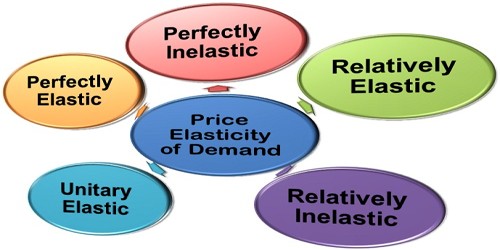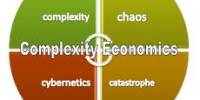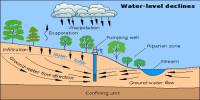Types of Price Elasticity of Demand
Price elasticity of demand is a term in economics often used when discussing price sensitivity. In other words, the price elasticity of demand is defined as the ‘ratio of percentage change in the quantity demanded to the percentage change in price. There are five types of price elasticity of demand. They are as follows:
Perfectly Elastic Demand
In perfectly elastic demand, a small rise in price results in fall in demand to zero, while a small fall in price causes increase in demand to infinity. Demand is said to be perfectly elastic if negligible change in price would lead to infinite change in the quantity demanded. Visibly, no change in price causes in infinite change in demand. Therefore, the elasticity of demand can be determined by the slope of the demand curve. Flatter the slope of the demand curve, higher the elasticity of demand.
Perfectly Inelastic Demand
When the demand for a commodity does not change despite change in price, the demand is said to be perfectly inelastic. Perfectly inelastic demand is a theoretical concept and cannot be applied in a practical situation. However, in case of essential goods, such as salt, the demand does not change with change in price. Therefore, the demand for essential goods is perfectly inelastic.
Unitary Elastic Demand
When the percentage change in the quantity demanded is equal to the percentage change in price, the demand for a commodity is said to be unitary elastic demand. When the proportionate change in demand produces the same change in the price of the product, the demand is referred as unitary elastic demand. The numerical value for unitary elastic demand is equal to one (ep=1). For example, 10% change in price causes 10% change in demand.
Relatively Elastic Demand
When the percentage change in the quantity demanded for a commodity is more than percentage change in price, it is called relatively elastic demand. Relatively elastic demand refers to the demand when the proportionate change produced in demand is greater than the proportionate change in price of a product. For example, if 10% change in price results, 20% change in quantity demanded. Another example, if the price of a product increases by 20% and the demand of the product decreases by 25%, then the demand would be relatively elastic.
Relatively Inelastic Demand
When the percentage change in the quantity demanded of a commodity is less than percentage change in the price, it is called relatively inelastic demand. For example, when 20% change in price causes 10% change in demand. For example, if the price of a product increases by 30% and the demand for the product decreases only by 10%, then the demand would be called relatively inelastic. The numerical value of relatively elastic demand ranges between zero to one (ep<1). Marshall has termed relatively inelastic demand as elasticity being less than unity.
Information Source:
















